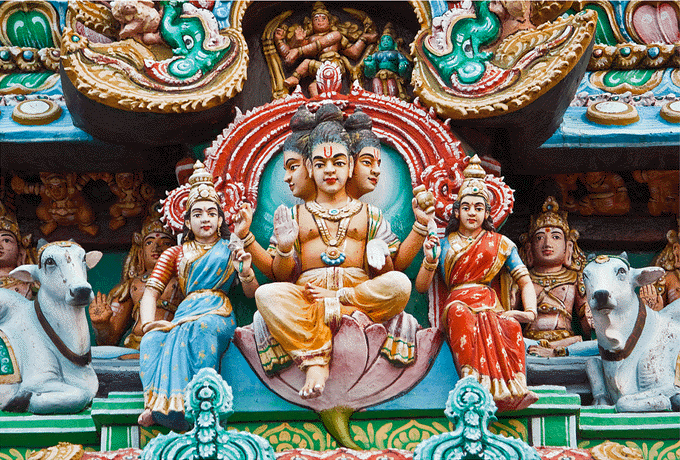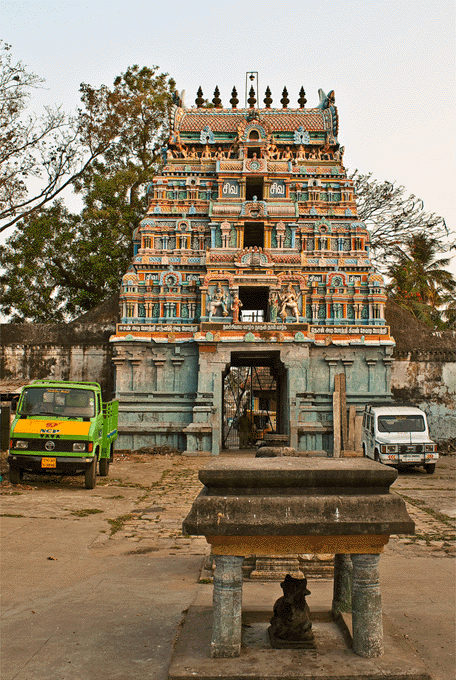
|
|
|
|
One of the most ancient temples in Kumbakonam, the Nageswara Swamy Temple is fairly small in size, but is one of the finest early Chola temples in the region. Believed to have been completed near the beginning of Parantaka I's reign (907 - 940), the temple architecture and highly ornate gopuram are beautiful. Although the Cholas only began building large temples like the Thanjavur Bhrahadeeswararar temple in the 10th Century, this comparatively small Nageswara Swamy Temple was built in the Early Chola period, 4th to 9th Century A.D. The temple is known by several names: Nageswara Swamy Kovil, Thiru Nageswarar, Kudandhai Keezhkkottam (Kudandaikkeezhkottam), Vilvaranyeswarar, and Vilvavanam, for the vilva leaf carried in Brahma's pot. Another name, Bhaskarakshetram, refers to the sun falling on the presiding linga on certain days.
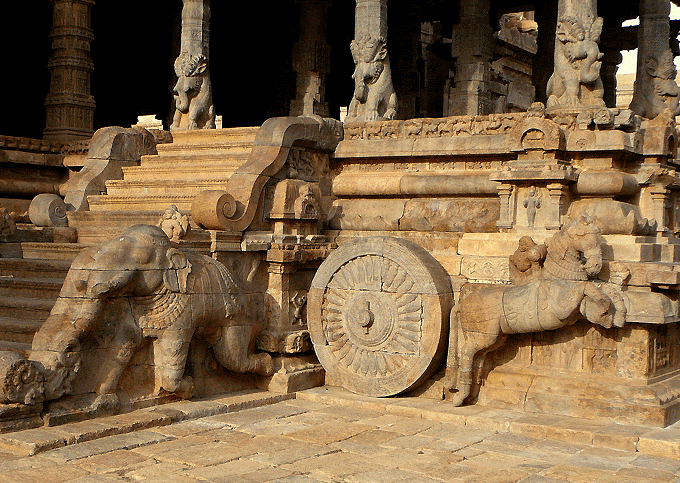
Sanctum Sanctorum Ratha Structure The sanctum sanctorum at Sri Nageswaran Temple is quite remarkable, being fashioned after a stone ratha, pulled by elephants and horses. A similar ratha on the other side of the temple houses Shiva Natarja. Sri Nageswara, the presiding deity here, is joined by his consort, Periya Nayaki (Periyanayagi). Sri Nageswara is also known as Paataala Beejanathar. On three days of the year -- the 11th, 12th and 13th days of Chithrai (April/May), the suns rays fall directly on the lingam in the sanctum sanctorum, coming through an opening in the eastern tower. A three-headed Lord Brahma also resides here, in a separate shrine. And, there is a wonderful murti of Brahmadeva with his consorts carved on the sanctum gopuram. Saraswati Devi is here,as sila rupam, as are Laksmi and Parvati. The main niches on the sanctum wall are inhabited by Brahma in the south, Dakshinamurti on the north (but south facing), and Ardhanarishvara (male Shiva and female Shakti in one figure) to the west. Elsewhere in the temple are shrines dedicated to Surya, Durga, Pralayakaala Rudrar and Kali Ma.
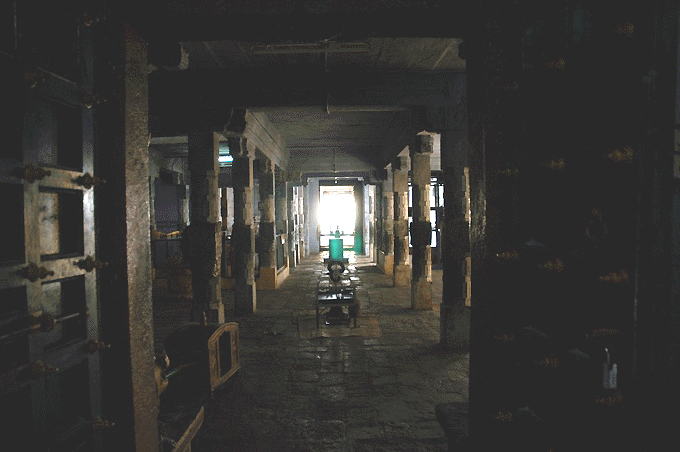
Temple interior Niches in the outer wall of the sanctum house a number of large, very graceful figures carved in standing postures. These high-relief, life-sized figures are most likely wealthy patrons. Each is beautifully ornamented and detailed.
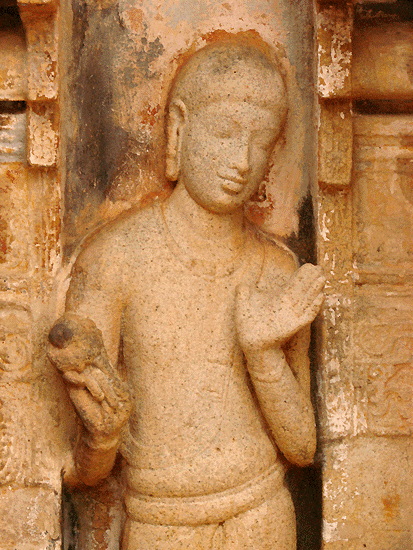
Sculptural figure, outer sanctum wall Chola temples of this type typically have four entrances, in each of the cardinal directions. Whatever direction the presiding deity faces is considered the main entrance.
In the temple courtyard, the sanctum sanctorum is connected to a mandapa with columns. They share a common base, which is carved with lotus petals and scenes from the Vedic epics. The Nritta Sabha, or dance hall, has an elevated mandapam with a flight of stairs. This part of the temple complex was built in the 12th century.
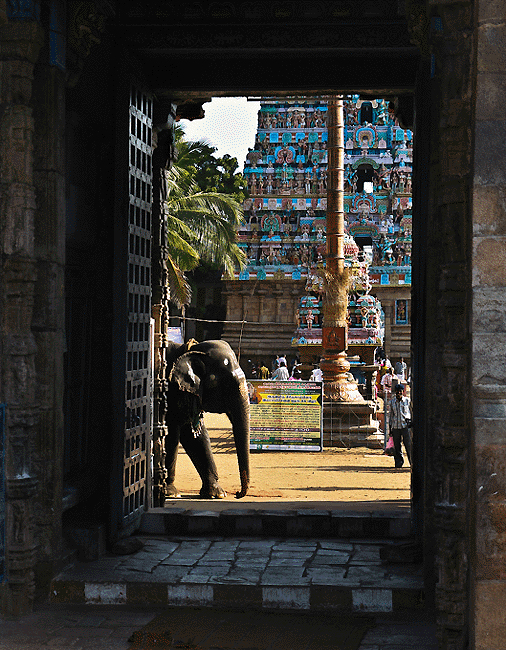
View of gopuram and dwajastambha The courtyard shrine for Nataraja (Aadalvallaar), like the sanctum, is fashioned as a stone ratha, with rearing horses and small images of the zodiac on the wheel spokes. It is drawn by two horses and two elephants. This entire mandapam is said to have descended from the heaven planets, on a chariot drawn by elephants. Climbing the steps of the chariot, one gets darshan of Nataraja and Sivakami in the shrine.
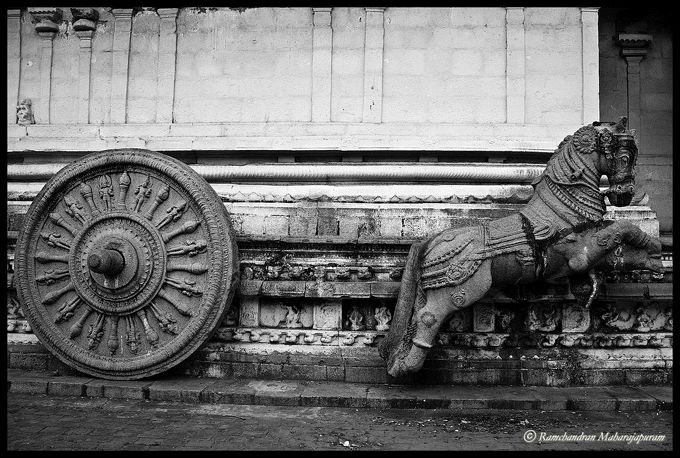
Nataraja ratha shrine Another notable shrine here is that of Rahu bhagawan, one of the nine celestial bodies. During Rahukaalam, milk abhishekham is performed daily for the Rahu murti. As the milk is poured onto the murti it turns blue, returning again to white when it flows off the murti, onto the floor. Sri Nageswara kovil is also the only temple where Rahu is found with his consorts. Adisesha and Lord Surya both worshipped Sri Nageswara here. Adisesha, groaning beneath the weight of the world, came to Kuvinvanam to perform penance. Siva and Parvati appeared before Adisesha, blessing him with adequate strength for his task. Surya offered worship here in order to regain his lost splendour. The nagas Dakshan and Kaarkotakan also worshipped Shiva here, as did Nala. Gautama Muni, Paraasarar and Bhageerata are also associated with this temple.
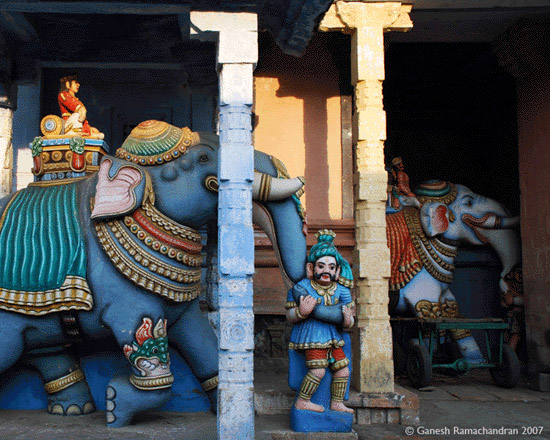
Temple elephant sculptures There are two temple theerthams: Naga Theertham is the sacred well, and Surya Pushkarani is the tank. Stala Vriksham is a Vilvam tree. Offering worship at Sri Nageswarar Temple in the morning, at nearby Tirunageswaram at noon, and at Tiruppampuram in the evening on the same day is considered to be very auspicious. Five worship services are offered here each day. Brahmotsavam is celebrated every year in the Tamil month of Panguni (March-April).
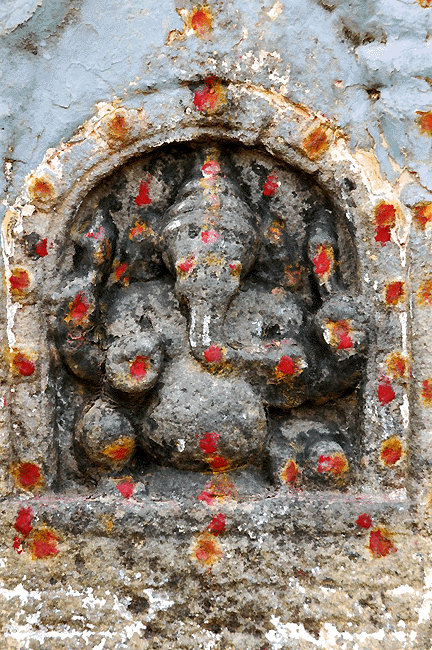
Ganesha murti, temple exterior niche
| |
